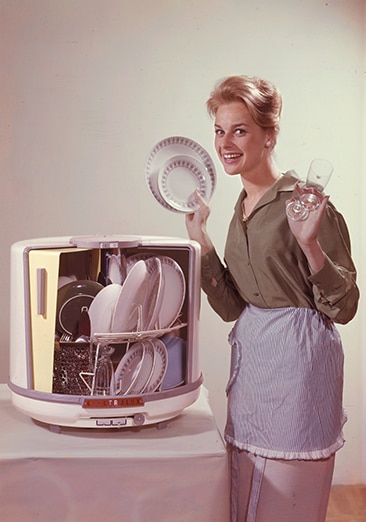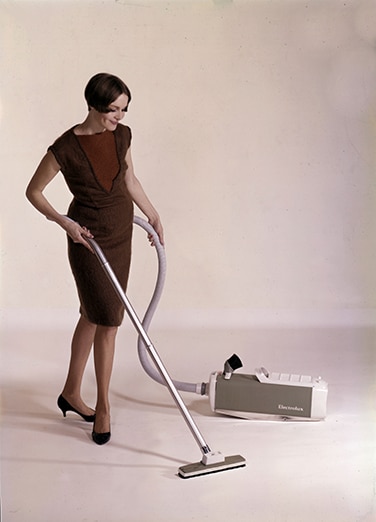After World War II, Electrolux entered a period of increased competition, lower profitability, trade barriers, imitators, stagnation and internal conflicts. At the same time, the growing Swedish home market provided opportunities to expand into new appliance categories.
During the war, the advanced product development laboratory at Lilla Essingen in Stockholm continued to develop new products. In 1940, Electrolux launched what would become its longest lasting product platform ever, the food processor “Assistent”. It was the perfect tool for the food-loving housewife: a machine that could whisk, mix, knead, mash, chop, crush, slice, mix, grate and puree the ingredients. And even stuff sausages.
The absorption fridge patents had started to expire after the war. When competitors in Europe and the US started to manufacture this relatively advanced technology, quality decreased together with the price levels. The absorption technology got a reputation for low reliability, not the least in the US where several accidents occurred. Instead, compressor fridges started to conquer the world market. Electrolux took note and launched its first compressor fridge in 1956.
Up until now, doing the laundry had been a very arduous task done largely by hand. Reducing the time spent washing clothes would radically improve the lives of many women. In 1951, Electrolux launched its first washing machine, the W20. It consisted of a drum with a wing-shaped agitator which circulated the water and massaged the laundry. In 1959 Electrolux launched another labour-saving device: the D10 dishwasher. It was not only the company’s first dishwasher but also the world’s first countertop model.

Ad for the very first dishwasher from Electrolux, the countertop model D10, launched in 1959
The vacuum cleaner business continued its global success, thanks to new innovations and distinctive design. The 1964 launch of the groundbreaking Luxomatic, which had features such as a cord winder, self-sealing paper dust bags and a dust indicator, coincided with the start of Electrolux own design department.

New innovations and distinctive design
In 1962, Electrolux acquired the Swedish competitor Elektro-Helios, which produced cookers, compressor fridges and professional kitchens. Now it could provide consumers with a full range of kitchen products. But the two very different companies had difficulties to agree on the strategy forward. Electrolux was now a global leader in vacuum cleaners, but only a small local player in the other categories, with shrinking profitability in a very fragmented industry. Axel Wenner-Gren had sold his Electrolux shares in 1956, and towards the mid-60s the new main owners, the Wallenbergs, realized that something radical had to be done.

